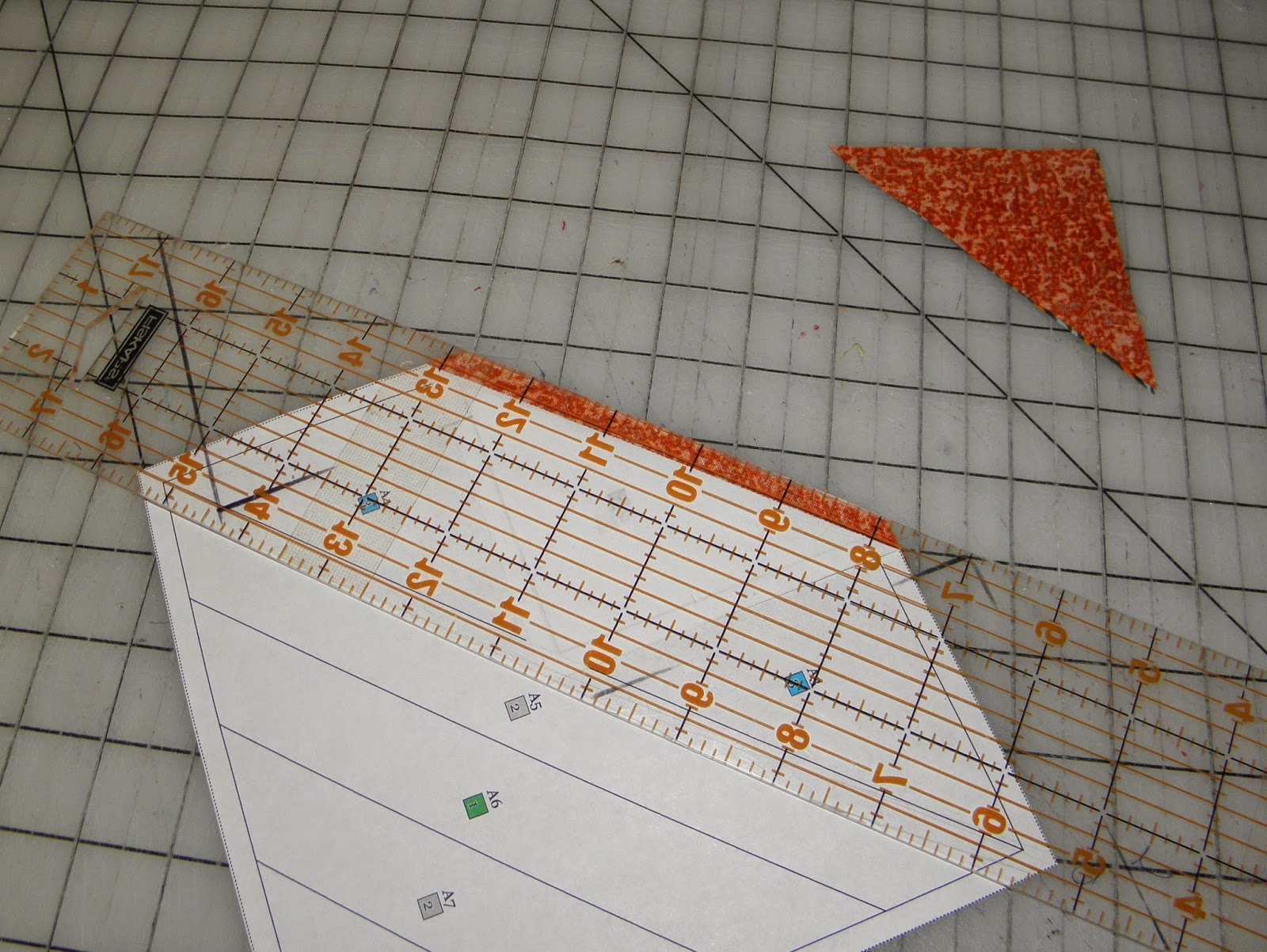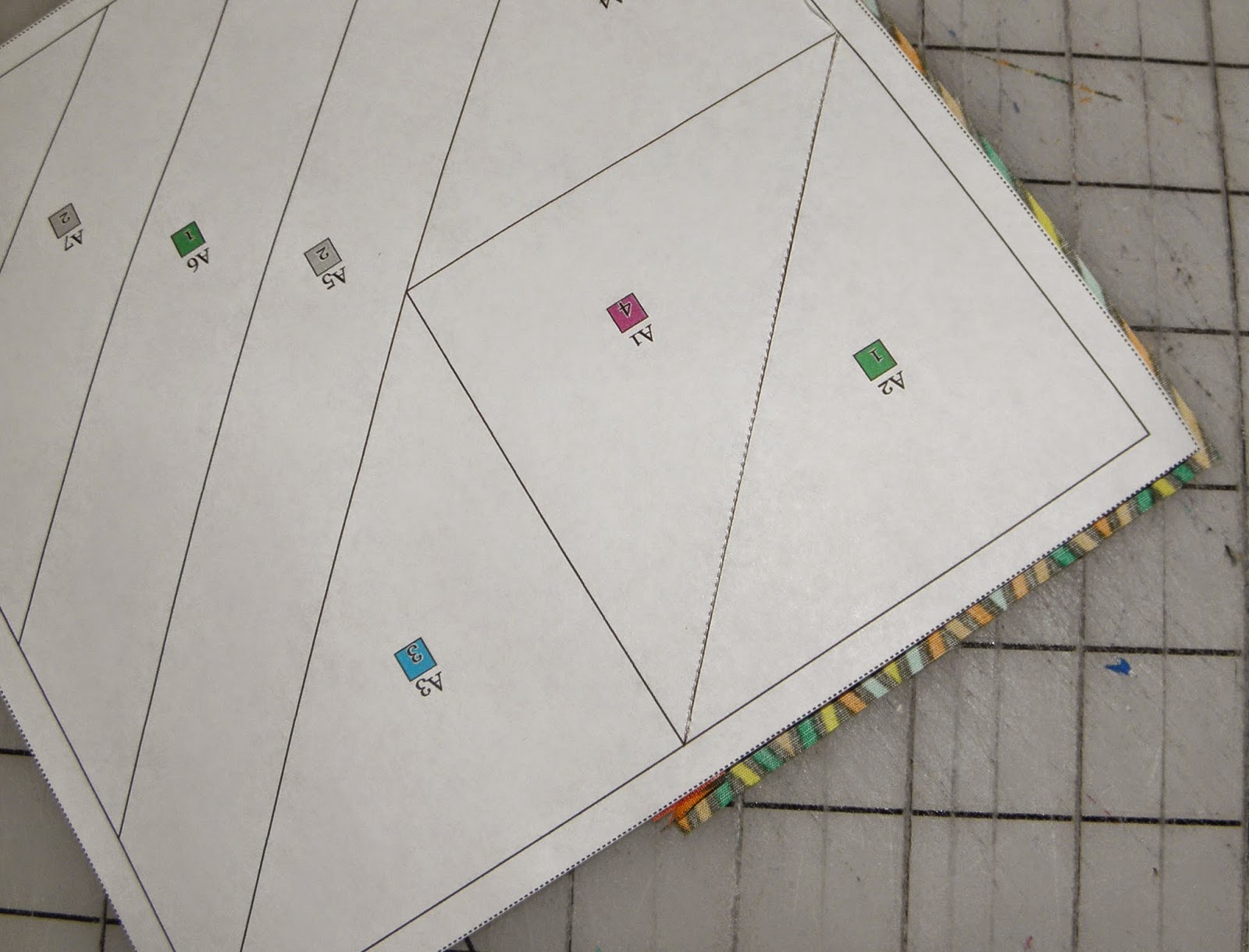This beginners tutorial is the one I used when I was starting out and it really helped me:
http://www.quilterscache.com/StartQuiltingPages/startquiltingthree.html
So I suggest beginners start with that tutorial.
I am writing this tutorial as a bridge between that simple block and slightly more complex blocks.
This block pattern is in my Scrappy Adventures Quilt Pattern (update!!! 2018 book released, available on Amazon)
Step 1 What will you need?? Scrappy strips 2" wide and for this block scrappy 5" squares worked well. scissors, ruler, rotary cutter, sewing machine, sashing fabric (I chose grey) and the printed pattern page.
Cut out the pattern, I use the rotary cutter because it is faster than scissors:
To understand the markings you need to know that all pieces are marked on this block as beginning with A because this block only has one pattern section. Some pp blocks are made up of several sections that are put together once the pp is done. So the A1 piece is the first piece you will put on. The pink square in A1 tells you the color of that piece in the pattern. Pieces are then applied in numerical order, A1 joins to A2 then A3 is added and so on.
Step 2 Place your paper printed side down:
Put your two 5" squares right sides together on the half square triangle (HST) corner of the pattern These will become pieces A1 and A2
Set your stitch length to 1.5 (or fairly fine stitches) this helps when removing the paper later!
Turn the whole lot over so you are looking at the printed side and stitch on the line between A1 and A2 starting right at the corner:
And stopping at the opposite corner:
Step 3 Trimming
Place your ruler on that line with an overhang of a quarter inch (that will be your seam allowance)
Trim away your excess. (to minimize wastage you could use triangles instead of 5" squares, but get the hang of pp before you worry about wastage!)
Step 4 Add piece A3
Looking at your printed side you'll see that A3 is a triangle adjacent to the HST you just made:
Again I used a 5" square, lay it over the HST right sides together:
Stitch on the line and then fold back to trim:
Fold on the stitch line that is the diagonal line across the middle of the block:
Trim this off leaving a 3/8 seam allowance this time, because it will be trimmed again later:
Step 5 Adding the remaining strips one at a time:
Lay your grey strip over the pattern right sides together with the raw edge meeting the edge you just trimmed:
Flip it over and stitch on the line:

Now you can fold back and trim that 3/8 to 1/4 inch seam allowance.
Then press open and add the next strip, continue to follow this process for adding strips until the strips have covered the 2nd half of the pattern.
Step 6 Trim the block
You have a completed block! The sky is the limit in terms of what you can do with color choices and orientation of the block within a quilt. Sets of four of these would look great as a cushion cover.

Before sewing into a quilt top the paper needs to be carefully ripped from the back along the stitching lines. But if I am storing the blocks for a long time like the 12 months of a BOM I leave them attached until I am ready to sew them, this prevents stretching.
 |
| Removing the paper |
 |
| Making a large block from several put together |
 |
| An alternate layout makes a square on point |
If you have any questions please don't hesitate to contact me, I have a contact me form in my left sidebar.
























